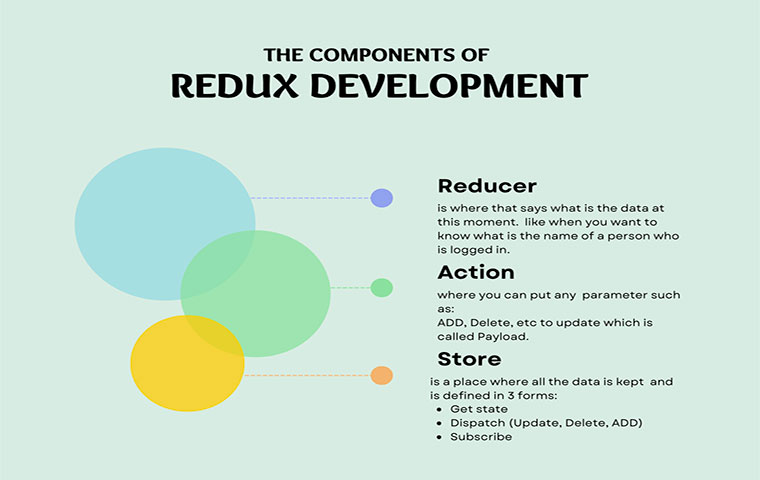In-App Purchases vs Ads: Which Strategy is Best?
You’ve created your app, and people are starting to download,...
We use cookies for our website to give you the most relevant experience by remembering your preferences. By clicking “accept”, you consent to use of ALL the cookies
This website uses cookies to improve your experience while you navigate through the website. Out of these, the cookies that are categorized as necessary are stored on your browser as they are essential for the working of basic functionalities of the website. We also use third-party cookies that help us analyze and understand how you use this website. These cookies will be stored in your browser only with your consent. You also have the option to opt-out of these cookies. But opting out of some of these cookies may affect your browsing experience.
Necessary cookies are absolutely essential for the website to function properly. These cookies ensure basic functionalities and security features of the website, anonymously.
| Cookie | Duration | Description |
|---|---|---|
| cookielawinfo-checkbox-functional | 11 months | This cookie is set by GDPR Cookie Consent plugin. The cookie is used to store the user consent for the cookies in the category “Analytics”. |
| cookielawinfo-checkbox-functional | 11 months | The cookie is set by GDPR cookie consent to record the user consent for the cookies in the category “Functional”. |
| cookielawinfo-checkbox-necessary | 11 months | This cookie is set by GDPR Cookie Consent plugin. The cookies is used to store the user consent for the cookies in the category “Necessary”. |
| cookielawinfo-checkbox-others | 11 months | This cookie is set by GDPR Cookie Consent plugin. The cookie is used to store the user consent for the cookies in the category “Other. |
| cookielawinfo-checkbox-performance | 11 months | This cookie is set by GDPR Cookie Consent plugin. The cookie is used to store the user consent for the cookies in the category “Performance”. |
| viewed_cookie_policy | 11 months | The cookie is set by the GDPR Cookie Consent plugin and is used to store whether or not user has consented to the use of cookies. It does not store any personal data. |
Functional cookies help to perform certain functionalities like sharing the content of the website on social media platforms, collect feedbacks, and other third-party features.
Performance cookies are used to understand and analyze the key performance indexes of the website which helps in delivering a better user experience for the visitors.
Analytical cookies are used to understand how visitors interact with the website. These cookies help provide information on metrics the number of visitors, bounce rate, traffic source, etc.
Advertisement cookies are used to provide visitors with relevant ads and marketing campaigns. These cookies track visitors across websites and collect information to provide customized ads.
Other uncategorized cookies are those that are being analyzed and have not been classified into a category as yet.
Cyberia Tech, Inc. respects your privacy. This Privacy Policy explains how we collect, use, and share your information. By using our services, you agree to this policy. If any other agreements conflict with this Privacy Policy, the terms of those agreements prevail.
Cyberia Tech complies with the EU-US and Swiss-US Privacy Shield Frameworks for handling personal data from the EEA, UK, and Switzerland. In case of any conflict, the Privacy Shield Principles prevail. Learn more at Privacy Shield. Key Definitions
Information linked to an individual, transferred from the EEA, UK, or Switzerland to the U.S.
Data revealing race, religion, health, sexual orientation, and similar categories.
Effective Date: [ 2025 / 11 / 29 ]
Welcome to The Cyberia Tech ! By accessing or using our website or services, you agree to
comply with and be bound by these Terms of Use and our Privacy Policy. If you do not agree with
these terms, please do not use our Services.
Loading
0 %

For major projects, you need a script with the same level of productivity as the redux toolkit typescript. It’s not ideal for a developer or a project to deal with software that loads slowly and takes too long.
Redux development is just what you need to construct an app in a clear and controlled fashion. The advantages it provides will improve our odds of obtaining all the necessary parts.
The sung redux toolkit with typescript allows for the seamless integration of many different components.
Let’s find out what this library is and why it’s so important during the app development process. To what end will it be put to use? Why not, then?
Table of Contents
The situation of development is, as we are all aware, a complex one. You will be confronted with APIs and the client side the moment you enter a large project.
This is where redux comes in, giving your JS app a stable, reliable state. The developer respects your efficient being that’s why it uses redux development since the goal is having the user everlasting in an app.

The developer tries to use the redux components and APIs to make the codes at an optimized level, even a customized one owing to the premade components.
What you gain as a profit is a fast enough loading time. It prevents you from any repetition.
It is a standard process that can be easily used whenever you need to manage the client-side perfectly. No need to worry about having trouble writing. Redux is built on 3 main parts.
The initial state is the first step that dispatch is kept here. It uses the reducer to calculate the new state. In other words:
Since you got the point, let’s explain more about it. When you know each part, you realize the benefits.
Clearly, actions are called events. You send data from the application to the redux store.
That data is shaped as user interaction, API calls, and shape submission. Actions are distinct and clear JS objects.
They need to have an action type and payload that includes the required information to work on by the action.
Where are actions come from? They are created by an action creator. Don’t forget they must have type and payload.
As we said, they are pure functions that mean it takes the current state of an application, executes an action, and return to the new state of the app.
It is based on reduce in javascript. A single value is considered from multiple values after implementing a callback function.
The data is not changed here; they have the same result since it is opinionated.
Application state is holding here. We recommend you have only one store in each redux application.
What is its mission? It keeps data and updates the state.

When you use the redux toolkit with typescript, your development path runs smoothly and removes the obstacles, the need to repeatedly pass from one component to another; this is where you can count on optimization.
We are referring to a single location where the application’s whole state can be stored.
They are so in sync that reading the saved state causes no problems or cascades to lower components.
Knowing the capability and its advantages can help you comprehend why putting it to use is crucial.

Because redux is built on typescript, it works best with React. You may also use it like you would use Angular JS, Vue JS, Polymer, or Backbone JS for your view library.
The library strongly stoves a few key issues, streamlining the most typical redux use cases.
Despite its rigid regulations, it provides considerable leeway in accordance with some helpful default actions.
When you’re up against the challenge of building a sizable application or comparable programming, the redux toolkit is there to help.
Redux-related code is easier to write now that it has been simplified. In addition to the redux toolkit’s many useful individual functions, your app should rely on additional regularly used packages.
I don’t see the point. Whether starting from scratch with your mobile app development or wanting to upgrade existing, substantial software, you have complete freedom in determining how these components will be utilized.

Don’t underestimate the redux toolkit typescript potential; these two typescripts and redux are integral to form the necessary part of the development, which is the front end they need each other to complete the whole process roll up.
In the world of mobile frontend development, leveraging powerful tools like Redux Toolkit with TypeScript can greatly enhance the development process.
Redux Toolkit and TypeScript’s static typing provide a solid foundation for building scalable and maintainable mobile applications.
By utilizing Redux Toolkit’s efficient state management capabilities and TypeScript’s strong type-checking, developers can ensure a more structured and reliable mobile frontend codebase.
The seamless integration of Redux Toolkit and TypeScript empowers developers to create robust and performant mobile experiences, enabling smoother data flow, improved debugging, and easier code maintenance throughout the mobile frontend development journey.
Should you use TypeScript with Redux?
When creating Redux applications, TypeScript is strongly recommended. Like every other technology, TypeScript has its own set of constraints. There is still more coding to be done, as well as learning the TS syntax and developing the application.
Does Redux toolkit persist data?
Developers may save multiple copies of the Redux store using the Redux Persist package. The state of the site will be preserved even after reloading the page in a new browser tab.
You need to learn the fundamentals of app development, namely, used by the Redux toolkit typescript.
The following essay serves as a high-level introduction to why redux development is so crucial.
The indicated fundamental ideas outline the procedures you must follow. To reach your full potential as a developer, you must master the basics.
Using the Redux toolkit with typescript, you may construct an app with superior integration, maintainability, and error debugging.
Contact us, as we have redux developers that can assist with developing your next major app project.
You Can Get More Information!
